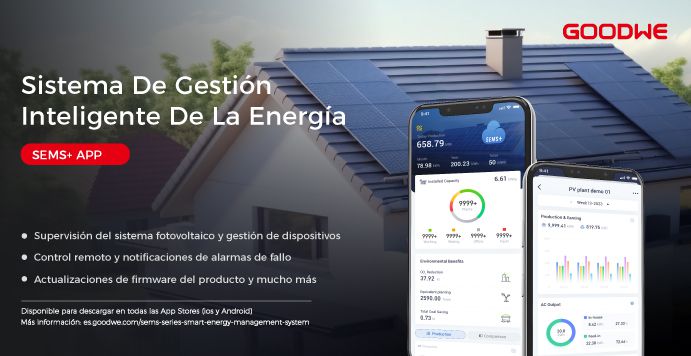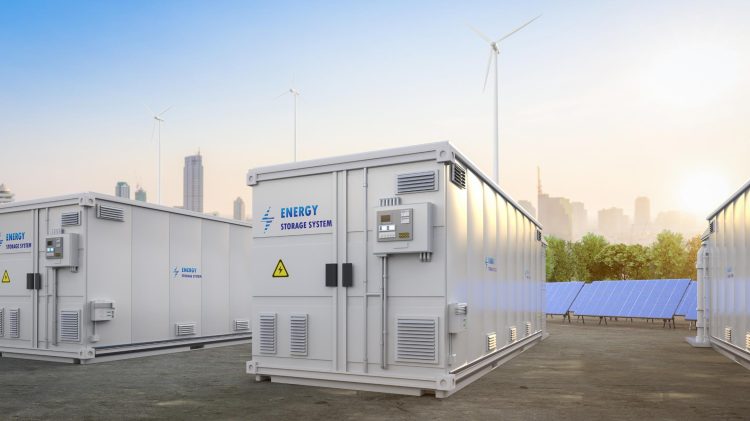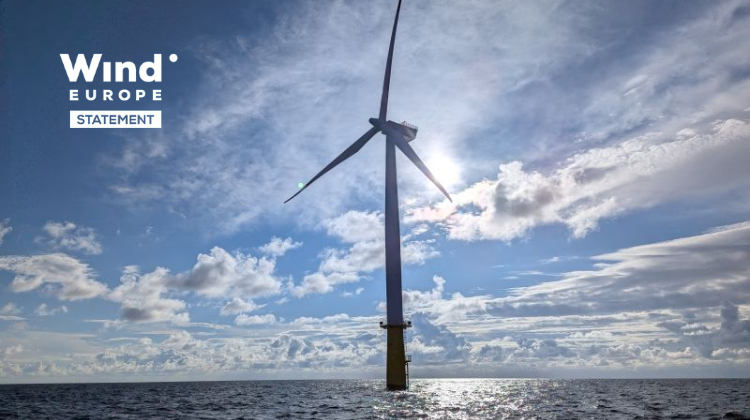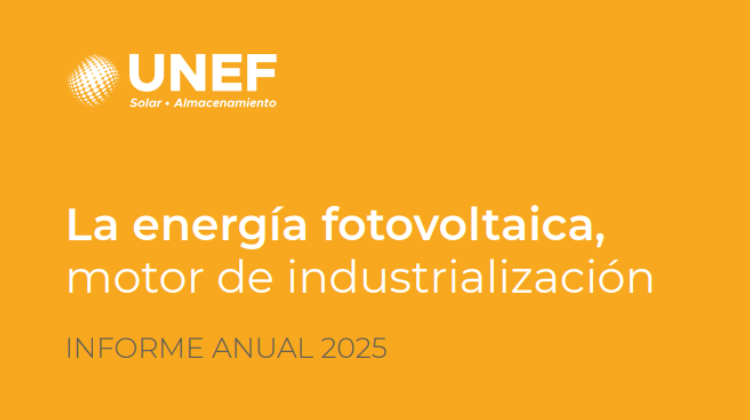The energy transition is driving a surge in demand for specialized technical profiles in renewable energy, with project engineers, maintenance technicians, and draftsmen among the most sought-after roles.


The energy transition is driving a surge in demand for specialized technical profiles in renewable energy, with project engineers, maintenance technicians, and draftsmen among the most sought-after roles.

The offshore wind auction in Spain has been delayed until 2025, raising concerns within the sector. Experts warn of the urgent need to train specialized professionals to meet the anticipated growth and technological demands of this key industry.

HELAPCO, the Hellenic Association of Photovoltaic Companies, states that curtailments are expected to reach 1 TWh in 2024, representing 3.5% of total renewable energy production. They emphasize that between 7.5 GW and 8 GW of storage capacity is needed to address this issue. Additionally, they project surpassing the 2030 photovoltaic target of 13.5 GW and reaching 20 GW of installed capacity.

With 483.2 MW signed in September 2024, primarily driven by corporates and a growing interest from the pharmaceutical industry, a 16% decrease in solar PPA prices and stability in wind contracts stand out.

This system enables remote monitoring, management, and optimization of photovoltaic installations, with advanced security and automatic firmware updates.

Following the inclusion of the project in the MAPs in April, Red Eléctrica initiated its processing and has since undertaken significant efforts, now enabling the imminent commencement of construction.

The latest SotySolar report reveals that solar self-consumption faces economic, bureaucratic, and perception barriers. In an interview with *Energía Estratégica España*, Montserrat Lavilla stated that despite incentives and long-term savings, it is necessary to simplify processes and raise awareness.

Next week, this regulation will be approved, benefiting local sectors such as wood and ceramics, while judicial challenges regarding wind power development continue.

According to an analysis conducted by Energía Estratégica España, between September and the first weeks of October, 2,837.7 MW advanced in environmental processing from 34 projects. Of the total, 1,078.4 MW correspond to agrovoltaic energy and 1,005 MW to offshore wind energy, while the remainder is divided between onshore wind and photovoltaic energy.

Iberdrola, Enel Green Power, and X-ELIO lead the largest renewable energy projects in Spain. Among the most notable are the Francisco Pizarro and Lorca Solar photovoltaic parks, and the Santuario wind farm, which will drive the new installed capacity over the next three years.

It is a project consisting of five photovoltaic plants with a total capacity of 248 MWp, as well as an electricity transmission project in the Seville towns of Guillena, Burguillos, and Alcalá del Río.

Nine initiatives, led by companies such as Rolwind and Our New Energy, stand out for their capacity and strategic location in key regions such as Andalusia, Catalonia, and Asturias, enhancing renewable integration.

Alantra Energy Transition consultants analyze the Italian storage market and the role of MACSE, and affirm that there is high appetite from developers and investors for the merchant scheme with capacity payments and the MACSE scheme, which will provide a guaranteed income of 80% for most of the project’s lifespan.

The CNMC resolution modifies the electricity market settlement to 15-minute intervals. This measure aims to improve efficiency in managing deviations. From the renewable sector, it is seen as a positive opportunity, although it involves technological adaptation efforts.

With a current capacity of 5.3 GW, Greece is heading towards significant growth in the wind sector, as there are 970 MW of new projects under construction and contracted, expected to be connected in the next 18 months, according to the Hellenic Wind Energy Association (HWEA). Furthermore, they highlight optimistic expectations for achieving the 2030 goals of 8.9 GW of offshore wind and 1.9 GW of marine wind.

The most sought-after profiles in the renewable energy sector vary by region, mainly between engineers and sales professionals. Technical and commercial positions offer the most competitive salaries, ranging from €45,000 to €50,000 annually, with engineers earning over €50,000.

Floating offshore wind faces challenges despite the recent drop in prices below €100/MWh in auctions. The key to its competitiveness lies in industrialization, standardization of floaters, and reliability, while Western OEMs deal with technological slowdowns.

3E is betting on photovoltaic projects, hybridization with wind, and standalone storage, driven by the recent construction permits in Spain. Additionally, the company plans to expand internationally, with particular interest in Latin America and new technologies such as green hydrogen, although the latter still requires technical and economic advancements.

The General Director of UNEF, José Donoso, highlighted during the event’s closing that “our country spends around 60 billion euros a year on importing hydrocarbons. The year we achieve total decarbonization will be like having a Next Generation investment every year for our economy with our internal resources.”

“These investments directly impact our expansion plan in the South Dock, as without the support that these funds would provide, the short-term development of this area for offshore wind would not be possible,” says Adolfo Noguero, Head of Expansion at the Castellón Port Authority, in an interview with Energía Estratégica Spain.

The PPA market in Portugal has experienced strong growth, driven by the energy transition towards carbon neutrality. According to Hugo Silva from TreeEnergy, the solar sector is leading this development, with long-term contracts that ensure competitive prices and energy stability.

The energy transition is driving a surge in demand for specialized technical profiles in renewable energy, with project engineers, maintenance technicians, and draftsmen among the most sought-after roles.

The offshore wind auction in Spain has been delayed until 2025, raising concerns within the sector. Experts warn of the urgent need to train specialized professionals to meet the anticipated growth and technological demands of this key industry.

HELAPCO, the Hellenic Association of Photovoltaic Companies, states that curtailments are expected to reach 1 TWh in 2024, representing 3.5% of total renewable energy production. They emphasize that between 7.5 GW and 8 GW of storage capacity is needed to address this issue. Additionally, they project surpassing the 2030 photovoltaic target of 13.5 GW and reaching 20 GW of installed capacity.

With 483.2 MW signed in September 2024, primarily driven by corporates and a growing interest from the pharmaceutical industry, a 16% decrease in solar PPA prices and stability in wind contracts stand out.

This system enables remote monitoring, management, and optimization of photovoltaic installations, with advanced security and automatic firmware updates.

Following the inclusion of the project in the MAPs in April, Red Eléctrica initiated its processing and has since undertaken significant efforts, now enabling the imminent commencement of construction.

The latest SotySolar report reveals that solar self-consumption faces economic, bureaucratic, and perception barriers. In an interview with *Energía Estratégica España*, Montserrat Lavilla stated that despite incentives and long-term savings, it is necessary to simplify processes and raise awareness.

Next week, this regulation will be approved, benefiting local sectors such as wood and ceramics, while judicial challenges regarding wind power development continue.

According to an analysis conducted by Energía Estratégica España, between September and the first weeks of October, 2,837.7 MW advanced in environmental processing from 34 projects. Of the total, 1,078.4 MW correspond to agrovoltaic energy and 1,005 MW to offshore wind energy, while the remainder is divided between onshore wind and photovoltaic energy.

Iberdrola, Enel Green Power, and X-ELIO lead the largest renewable energy projects in Spain. Among the most notable are the Francisco Pizarro and Lorca Solar photovoltaic parks, and the Santuario wind farm, which will drive the new installed capacity over the next three years.

It is a project consisting of five photovoltaic plants with a total capacity of 248 MWp, as well as an electricity transmission project in the Seville towns of Guillena, Burguillos, and Alcalá del Río.

Nine initiatives, led by companies such as Rolwind and Our New Energy, stand out for their capacity and strategic location in key regions such as Andalusia, Catalonia, and Asturias, enhancing renewable integration.

Alantra Energy Transition consultants analyze the Italian storage market and the role of MACSE, and affirm that there is high appetite from developers and investors for the merchant scheme with capacity payments and the MACSE scheme, which will provide a guaranteed income of 80% for most of the project’s lifespan.

The CNMC resolution modifies the electricity market settlement to 15-minute intervals. This measure aims to improve efficiency in managing deviations. From the renewable sector, it is seen as a positive opportunity, although it involves technological adaptation efforts.

With a current capacity of 5.3 GW, Greece is heading towards significant growth in the wind sector, as there are 970 MW of new projects under construction and contracted, expected to be connected in the next 18 months, according to the Hellenic Wind Energy Association (HWEA). Furthermore, they highlight optimistic expectations for achieving the 2030 goals of 8.9 GW of offshore wind and 1.9 GW of marine wind.

The most sought-after profiles in the renewable energy sector vary by region, mainly between engineers and sales professionals. Technical and commercial positions offer the most competitive salaries, ranging from €45,000 to €50,000 annually, with engineers earning over €50,000.

Floating offshore wind faces challenges despite the recent drop in prices below €100/MWh in auctions. The key to its competitiveness lies in industrialization, standardization of floaters, and reliability, while Western OEMs deal with technological slowdowns.

3E is betting on photovoltaic projects, hybridization with wind, and standalone storage, driven by the recent construction permits in Spain. Additionally, the company plans to expand internationally, with particular interest in Latin America and new technologies such as green hydrogen, although the latter still requires technical and economic advancements.

The General Director of UNEF, José Donoso, highlighted during the event’s closing that “our country spends around 60 billion euros a year on importing hydrocarbons. The year we achieve total decarbonization will be like having a Next Generation investment every year for our economy with our internal resources.”

“These investments directly impact our expansion plan in the South Dock, as without the support that these funds would provide, the short-term development of this area for offshore wind would not be possible,” says Adolfo Noguero, Head of Expansion at the Castellón Port Authority, in an interview with Energía Estratégica Spain.

The PPA market in Portugal has experienced strong growth, driven by the energy transition towards carbon neutrality. According to Hugo Silva from TreeEnergy, the solar sector is leading this development, with long-term contracts that ensure competitive prices and energy stability.

Denmark, Germany and the Netherlands are scrapping negative bidding in offshore wind auctions and adopting Contracts for Difference (CfDs) after years of failed tenders and stalled investment. WindEurope hails the shift as key to cutting costs and accelerating offshore expansion.

Strategies must target persisting underrepresentation of women across the global renewable energy landscape.

According to UNEF’s 2024 Annual Report, a total of 7,221 MW were installed last year, mainly on land, with 6,039 MW of new capacity installed. However, self-consumption registered a 31% drop in installed capacity compared to 2023, with only 1,182 MW of new capacity by the end of 2024.






